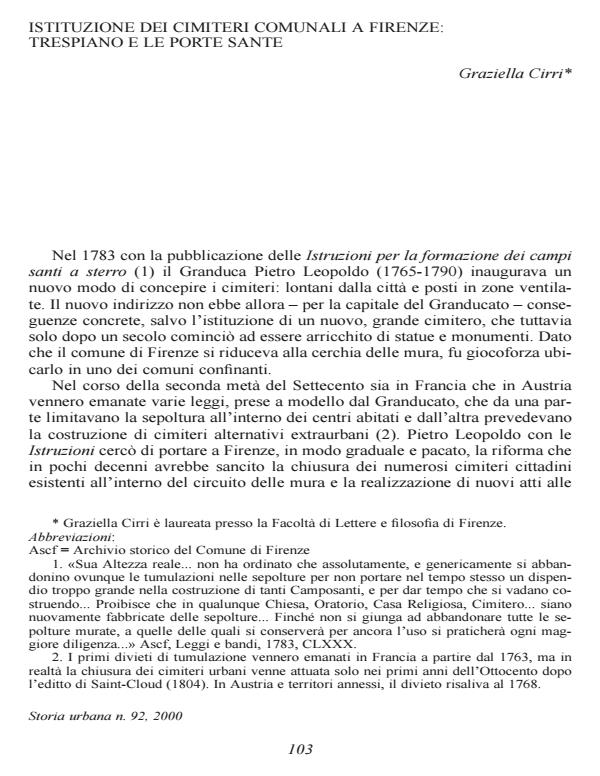Istituzione dei cimiteri comunali a Firenze: Trespiano e le Porte Sante
Titolo Rivista STORIA URBANA
Autori/Curatori Graziella Cirri
Anno di pubblicazione 1 Fascicolo 2000/92 Lingua Italiano
Numero pagine 17 P. Dimensione file 187 KB
DOI
Il DOI è il codice a barre della proprietà intellettuale: per saperne di più
clicca qui
Qui sotto puoi vedere in anteprima la prima pagina di questo articolo.
Se questo articolo ti interessa, lo puoi acquistare (e scaricare in formato pdf) seguendo le facili indicazioni per acquistare il download credit. Acquista Download Credits per scaricare questo Articolo in formato PDF

FrancoAngeli è membro della Publishers International Linking Association, Inc (PILA)associazione indipendente e non profit per facilitare (attraverso i servizi tecnologici implementati da CrossRef.org) l’accesso degli studiosi ai contenuti digitali nelle pubblicazioni professionali e scientifiche
The cemetery in Trespiano, located 6.5K from Florence, was created in 1784 by the Grand Duke Pietro Leopoldo in order to persuade the citizens to give up the unhealthy habit of burying their dead in the urban cemeteries. But up to the second half of the 19th century only the bodies of poor people were buried in the cemetery in Trespiano, while those of rich people continued to be buried in the old cemeteries. The cemetery of Porte Sante was created in 1854 within the Romanesque Basilica of San Miniato al Monte, and on the grounds adjacent to it, and from the very beginning, it was considered elitist and monumental. Between 1866 and 1877, the town council of Florence proposed closing all the urban cemeteries and building a new one on the grounds around the Charterhouse of Galluzzo, but in the end, because of strong opposition, it was decided to improve and to expand the cemetery in Trespiano, which has remained the principal cemetery in the city up to the present date.;
Graziella Cirri, Istituzione dei cimiteri comunali a Firenze: Trespiano e le Porte Sante in "STORIA URBANA " 92/2000, pp , DOI: